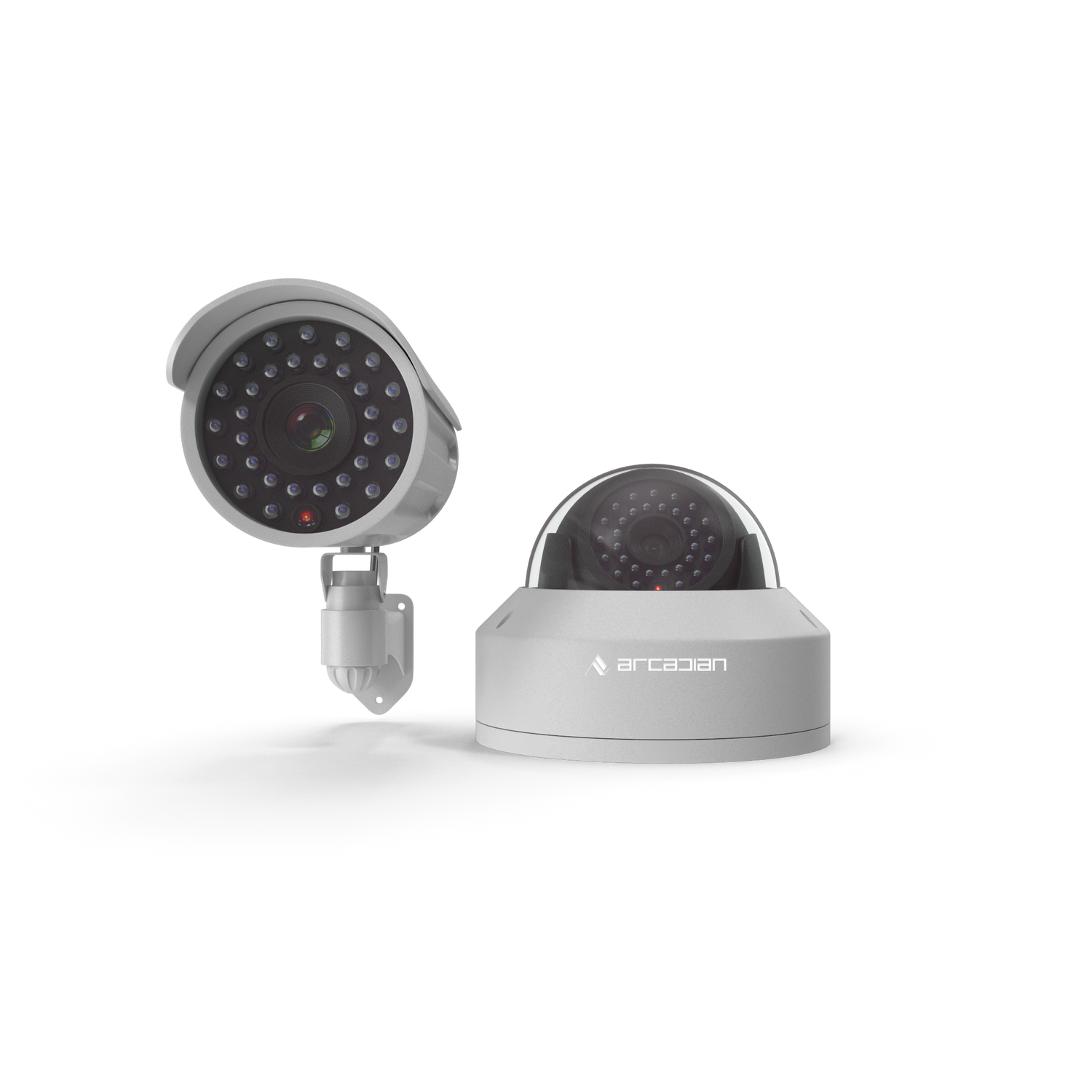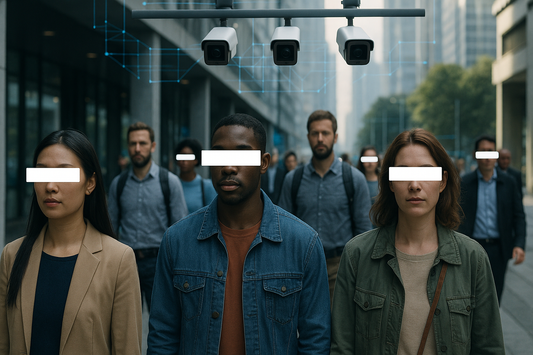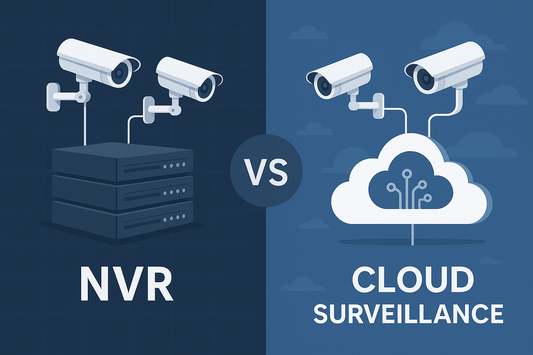Self-Storage Security in Crisis: Why Your Valuables May Be at Risk in 2025
Break-ins at self-storage units are surging across North America, costing tenants and operators millions. This post exposes weaknesses in the industry and explains how AI-driven surveillance changes everything.

Introduction
Self-storage has become a $44+ billion industry in North America, growing rapidly as more households downsize, relocate, or simply accumulate too many belongings. According to the Self-Storage Association (SSA), over 10% of U.S. households now rent a storage unit—a higher penetration rate than Netflix subscribers. But with growth comes a darker reality: thefts, vandalism, and insurance disputes are rising at alarming rates.
Traditional storage operators—from big chains like Public Storage and CubeSmart to smaller mom-and-pop facilities—often rely on outdated cameras, padlocks, and low-budget alarm systems. Tenants assume their property is safe, but in reality, security is one of the weakest links in the industry. Recent police reports in cities from Toronto to Dallas to Los Angeles show repeat patterns: multiple break-ins, minimal video evidence, and frustrated renters left with little compensation.
ArcadianAI believes this is a preventable crisis. With Ranger, our AI-powered, cloud-native security assistant, self-storage operators can move beyond static surveillance toward proactive, context-aware protection. This post explores the current weaknesses in self-storage security, real crime statistics, insurance gaps, and how operators can rethink protection before more customers lose trust.
Quick Summary / Key Takeaways
-
Self-storage crime rates are rising across North America.
-
Most facilities rely on outdated, reactive security.
-
Tenants face insurance gaps and denied claims.
-
Facility quality varies greatly by tier and standards.
-
ArcadianAI’s Ranger transforms surveillance into real protection.
Background & Relevance
Self-storage growth is booming, but so is risk:
-
Crime reports: A 2024 analysis of U.S. police data shows thefts at storage facilities up 19% year-over-year.
-
Canada: CBC reported in 2023 that dozens of Ontario storage sites were hit by coordinated break-in crews, often bypassing perimeter cameras.
-
Insurance claims: According to the Insurance Bureau of Canada (IBC), less than 40% of tenant claims for stolen property from storage units are fully paid because of exclusion clauses.
This issue matters now because storage is no longer just about “holiday decorations and old furniture.” Increasingly, renters store business inventory, vehicles, and high-value goods. Criminals know it—and they’re adapting faster than the facilities.
Core Topic Exploration
Why Self-Storage Security is Failing
-
Outdated Surveillance: Most facilities use cheap DVR-based CCTV from the 2000s. Low resolution, no AI, and often no remote monitoring.
-
Access Control Gaps: Keypads and gate codes are easily shared, stolen, or brute-forced.
-
Inside Job Risk: Employees and contractors often have untracked access.
-
Reactive Systems: Cameras record after the fact, offering little deterrence or prevention.
Competitors like Verkada or Eagle Eye Networks pitch “modern” cloud systems, but they remain camera-locked ecosystems that create vendor dependence. ArcadianAI’s camera-agnostic model means operators can upgrade intelligence without ripping and replacing.
Real Theft & Break-In Statistics
-
USA: FBI UCR data (2023) shows over 15,000 reported storage-related burglaries nationwide, with hotspots in Texas, California, and Florida.
-
Canada: Vancouver Police reported a 30% surge in storage facility break-ins between 2022–2024.
-
Costs: Average reported loss per storage burglary in North America is $7,500 per tenant, but in cases of business inventory storage, losses often exceed $50,000.
-
Repeat Offenses: Many sites are hit multiple times in the same year because criminals know the weak points.
Insurance Realities for Renters
-
Exclusions: Many storage operators require tenants to buy “facility insurance,” but policies exclude jewelry, cash, collectibles, or business goods.
-
Low Payouts: Even covered claims are capped, often at $2,000–$5,000, far below real loss value.
-
Disputes: Operators use “limited liability” contracts, leaving renters in legal battles.
This creates a dangerous gap: renters think they are insured, but insurers and facility owners protect themselves first.
Categorizing Storage Facilities by Standards
-
Tier 1 – Budget / Mom & Pop
-
Minimal security (padlocks, maybe one camera at the gate).
-
Lowest rental rates.
-
Highest theft risk.
-
-
Tier 2 – Mid-Market (Regional Chains)
-
Basic CCTV, perimeter fencing, keypad entry.
-
Appear professional but lack real monitoring.
-
Vulnerable to coordinated crews.
-
-
Tier 3 – Premium / Big Box (Public Storage, Extra Space)
-
Branded facilities with standardized access control.
-
Often advertise “24/7 surveillance” but rely on static systems.
-
Still weak against AI-blind cameras and insider threats.
-
-
Tier 4 – Smart / AI-Enhanced (Next Generation)
-
Live monitoring with AI, real-time alerts, and adaptive analytics.
-
Integrated tenant apps with digital access control.
-
This is where ArcadianAI Ranger leads the shift.
-
Business Risks for Operators
-
Reputation Damage: Viral TikToks of break-ins erode customer trust.
-
Insurance Premiums: Higher claims = rising costs for operators.
-
Tenant Churn: Customers leave for perceived safer competitors.
-
Legal Exposure: Class-action lawsuits emerging against operators who misrepresented security.
ArcadianAI helps operators reduce incidents by up to 65% by cutting false alarms, detecting unusual behavior, and escalating real threats faster than humans.
Comparisons & Use Cases
ArcadianAI vs Traditional NVRs & Competitors
| Feature | Legacy NVR/DVR | Verkada / Eagle Eye | ArcadianAI Ranger |
|---|---|---|---|
| Camera Compatibility | Limited / brand-locked | Brand-locked | Camera-agnostic |
| Alerts | Motion only | Cloud motion analytics | Context-aware AI |
| Monitoring | None | Optional SOC | Multi-location, real-time |
| Insurance Value | Weak evidence | Some video | AI-verified audit trail |
| ROI | Reactive loss | Vendor lock-in | Fewer claims, lower churn |
Common Questions (FAQ)
Q1: Are self-storage units really that unsafe?
Yes. Police data shows theft is rising, and most facilities oversell their “security.”
Q2: Will insurance cover stolen items?
Rarely fully. Most policies exclude high-value goods or cap payouts.
Q3: Why don’t operators invest more in security?
They balance cost vs. ROI, but underestimate the reputational damage of crime.
Q4: How can ArcadianAI Ranger help?
By detecting real threats in real time, reducing false alarms, and providing evidence insurers accept.
Q5: Which facilities are safest?
Only those with AI-enabled, live-monitored systems—not those with just cameras at the gate.
Conclusion & CTA
Self-storage is a booming business—but it’s also one of the weakest sectors in physical security. Tenants lose valuables, operators face lawsuits, and insurers dodge payouts. Traditional “24/7 surveillance” isn’t enough.
ArcadianAI Ranger turns static cameras into intelligent guardians, protecting both renters and operators from real-world risks.
👉 See ArcadianAI in Action → Get Demo – ArcadianAI
Security Glossary (2025 Edition)
Access Control — Systems that regulate who can enter a facility, typically via keypads, cards, or biometrics.
AI Alerts — Automated notifications triggered by AI when unusual or risky activity is detected.
Break-In — Unauthorized entry into a storage unit or facility, often involving lock cutting.
CCTV (Closed-Circuit Television) — Traditional camera systems that record footage without smart analytics.
DVR (Digital Video Recorder) — Older storage device for CCTV footage, typically limited to low resolution.
False Alarms — Incorrect alerts from motion-based systems, wasting time and resources.
NVR (Network Video Recorder) — A device used to record IP camera streams; often static and non-AI.
Public Storage — The largest U.S. self-storage chain, often criticized for outdated security.
Ranger (ArcadianAI) — AI assistant that transforms cameras into context-aware virtual guards.
Self-Storage Association (SSA) — Industry trade group tracking U.S. self-storage data and trends.
Tenant Insurance — Limited policies offered by storage operators, often excluding high-value items.
Theft Rate — Frequency of reported burglaries per 100 facilities or tenants.
VSaaS (Video Surveillance as a Service) — Cloud-based security management system with remote access.
Verkada — A closed-ecosystem cloud surveillance competitor.
Eagle Eye Networks — Cloud-based VMS provider targeting small/mid-size businesses.
CubeSmart — Major U.S. self-storage operator, mid-tier in security.
Extra Space Storage — Premium U.S. operator with standardized but static systems.

Security is like insurance—until you need it, you don’t think about it.
But when something goes wrong? Break-ins, theft, liability claims—suddenly, it’s all you think about.
ArcadianAI upgrades your security to the AI era—no new hardware, no sky-high costs, just smart protection that works.
→ Stop security incidents before they happen
→ Cut security costs without cutting corners
→ Run your business without the worry
Because the best security isn’t reactive—it’s proactive.






